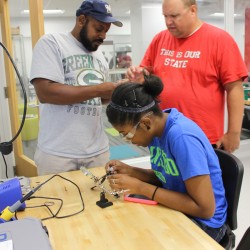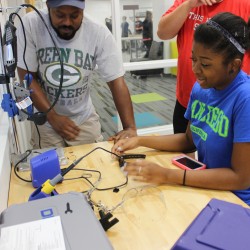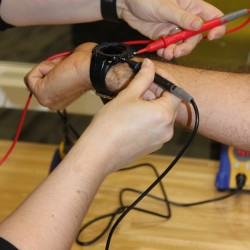I am going to take a break from the poverty question and write about an article that was shared by one of my Kenan Fellow colleagues, Jennifer Walmsley. The article titled “How to fix the apathy problem in schools” (http://www.newsobserver.com/opinion/op-ed/article81668307.html) felt beyond relevant. Apathy is something that I struggle with everyday as a teacher and I mean everyday. There were a couple of points the author touched upon that I will share my reactions to:
Teachers are expected to combat apathy by continually finding new and innovative ways to reach students – through multimedia lessons, group work, games, alternative assessments or whatever it takes. This expectation is passed down from school administration and even parents. During teacher evaluations it is always asked, “What are you doing to improve student engagement?” Teachers can’t help but fall into this trap because as you may be aware keeping your job in part depends on student engagement. It seems as if we are tasked to create innovative, ground breaking, earth shattering lessons that would decuple student engagement. Okay maybe I took it a little too far but sheesh, that’s what the expectation can feel like. Not only that we must teach to their learning styles, to their individualized learning plan, to whatever makes them happy. Now I’m all for a student centered classroom. However, I feel as if we’ve given the keys to the students and the teacher is in the passenger seat just along for the ride.
Maybe I’m old school, a relic from a bygone era but I was expected to follow whatever lesson the teacher doled out and get the most out of it that I could. Every lesson wasn’t dynamic. Sometimes it was, “Do problems 1-20 in your textbook.” In language arts, “Read the passage on pages 12-18 and complete the questions on page 19.” I tell my students that everyday isn’t always going to be fun and exciting. Sometimes you have to do the grunt work to be successful.
Teachers, parents, administrators and, of course, the students have to start making self-motivation an educational focus and priority, with self-motivation becoming the new educational buzzword
A comment that I often find myself making to students is, “It’s your education.” I say this because I want my students to take ownership of their education. The way I see it, their education is the most important thing in their life at the moment. Granted, I didn’t always see it that way myself during my schooling but hindsight gives me the ability to pass on that perspective to them. It is well noted that students have a lot of distractions these days; namely social media. There is Snapchat, Facebook, Twitter, Kik, Ask FM, Instagram, Periscope and the list goes on. For many students maintaining their social profile is the most important thing in their life. Who can blame them? These outlets are constantly promoted to them as the “in” thing to do. The thing about teenagers is they don’t want to be left out, at least a majority. What if joining a book club became cool for a majority of students? What if solving complex math puzzles became super–cool?
Do you know who can make academics the coolest thing since sliced bread? Parents. If you survey any teacher they can tell you what most of their successful students have in common: parent support. Now, there’s a thin line between being over involved and involved just enough but either way parent support is key. Parents of this generation have often been criticized for wanting to be their student’s best friend or overall lacking the backbone to do what’s right for their student. Being a parent myself I don’t want to be too overbearing to my daughter to the point that she is miserable. However, I do want to give her outlets and opportunities to discover ways to maximize her talents.
At the end of the day you have to want to achieve your success more than anyone. It’s the old adage, “You can lead a horse to water but you can’t make it drink.” Working with middle schoolers is tricky in that regard because most of them can’t see the light at the end of the tunnel or let alone know that they are in the tunnel. For myself I have to continue to push and implore my students to realize that they are on a journey and it will get tougher every step of the way. I have to continually reinforce to them that they are building the skills and fortitude to make their arduous journey less strenuous. Because in the end you are basically a reflection of what you’ve created.
















